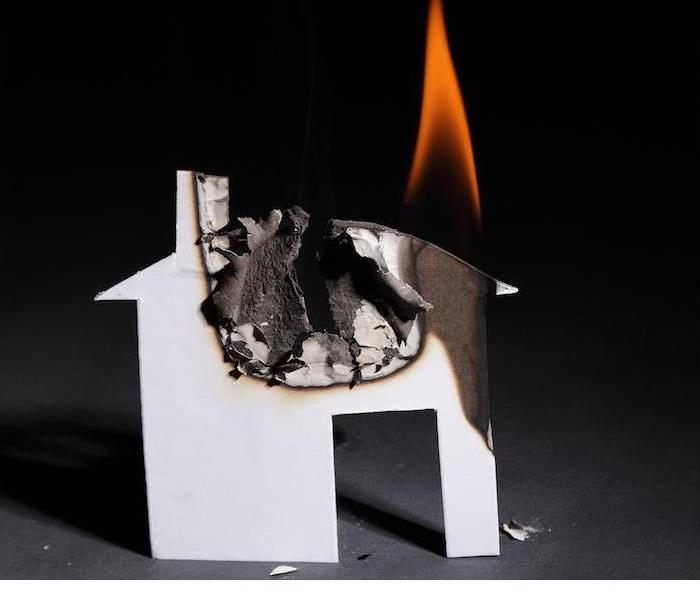Every Fire Ever, Explained | SERVPRO® of Reno Southwest
1/20/2022 (Permalink)
 If your home or business has any damage, SERVPRO of Reno Southwest is ready around the clock to help you recover.
If your home or business has any damage, SERVPRO of Reno Southwest is ready around the clock to help you recover.
Fire is one of the most intimidating forces on earth, and we often use angry words to anthropomorphize it—it seems so reckless and full of rage, and it sometimes appears to essentially burn until it decides to stop, despite our best efforts to contain it.
But the truth is that every fire has limitations, and those limitations are ground in four very simple scientific elements.
The fire tetrahedron shows these limitations in a three-dimensional model (think of a three-sided pyramid with a triangular base and you’ve got it).
In doing so, we can pretty simply understand the building blocks and limitations of any fire. See, you will use geometry in real life!
Fuel. Fires don’t simply happen abstractly—they have to happen to or on some object or material. Whatever you would say a fire “burned,” that would be considered the fuel source.
Heat. Combustion of material can’t happen at low temperatures—that’s why there are no cold fires. An object must reach its combustion threshold before a fire can begin.
Oxygen. Fires literally suck the oxygen right from the air around them and convert it to carbon dioxide—and the air they leave behind is dangerously full of carbon monoxide.
Chemical Chain Reaction. Fuel has to remain available, heat has to stay high, and oxygen has to stay abundant in order for the chain reaction that goes on inside every fire to propagate. The perpetuation of this cycle is crucial, and without it a fire won’t survive.
Cool it. If heat is vital to a fire, then the inverse must be true of fire management. Using water to chill a fire out and restore thermal balance to the fuel source is a frequent way we stop fires.
Smother it. Cutting off a fire from the oxygen it needs is another effective way to bring a fire to a halt. This is why when you spark a grease fire, you’re instructed to put a cookie sheet or other pan over the pan in which the fire starts.
Starve it. Once a fire runs out of food, it’s done—kind of like a teenager. So removing or separating fuel sources from a fire is an effective method of fire protection and management.
Interrupt the chain reaction. The continuation of a fire depends on the proliferation of its combustion cycle, and if that cycle hiccups, the whole thing is off. A certain set of chemical compounds is able to accomplish this in ways we can’t really get into—but they’re highly effective, and later versions of them are also clean for the environment and leave no moisture or residue behind, which is perfect for putting out electrical fires.
If the fire tetrahedron makes a wreck of your home or business, we’re ready around the clock to help you recover. Contact SERVPRO anytime for fast, thorough cleanup and recovery after a fire.





 24/7 Emergency Service
24/7 Emergency Service